Listening to Christmas music while eating Tex-Mex Casserole, as one does…
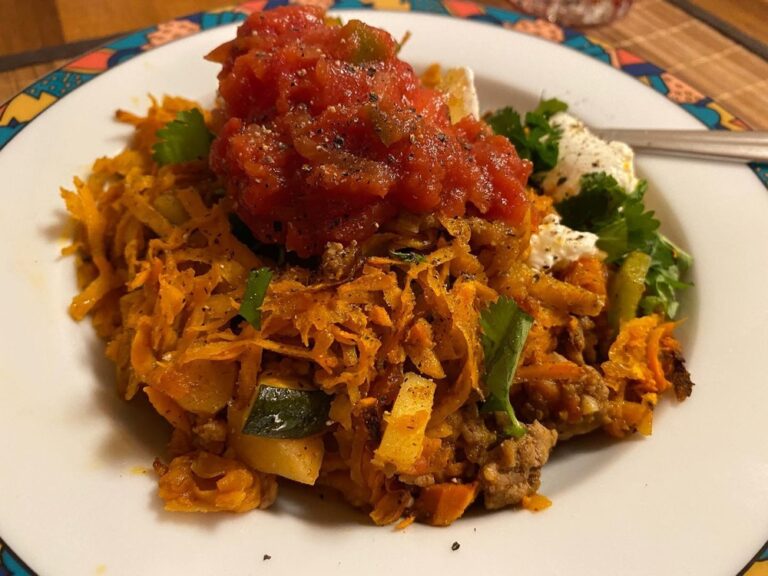
personal blog of Kris Howard
Listening to Christmas music while eating Tex-Mex Casserole, as one does…

We found an antique shop-turned-Christmas market and bought some special Munich ornaments, including my very own Weihnachtsgurke (Christmas pickle)!
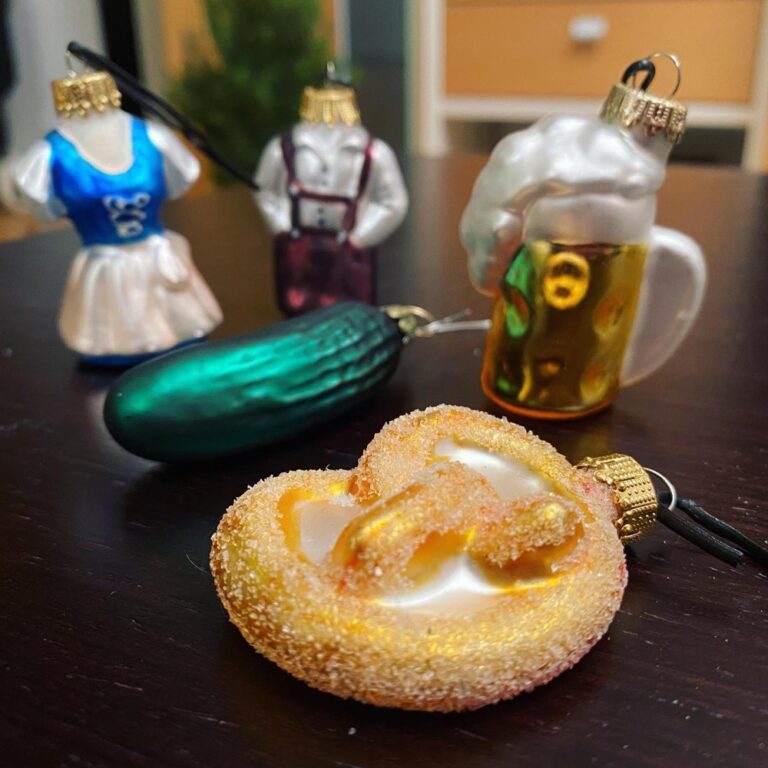
Ich liebe meinen kleinen Weihnachtsbaum. ❤️🎄
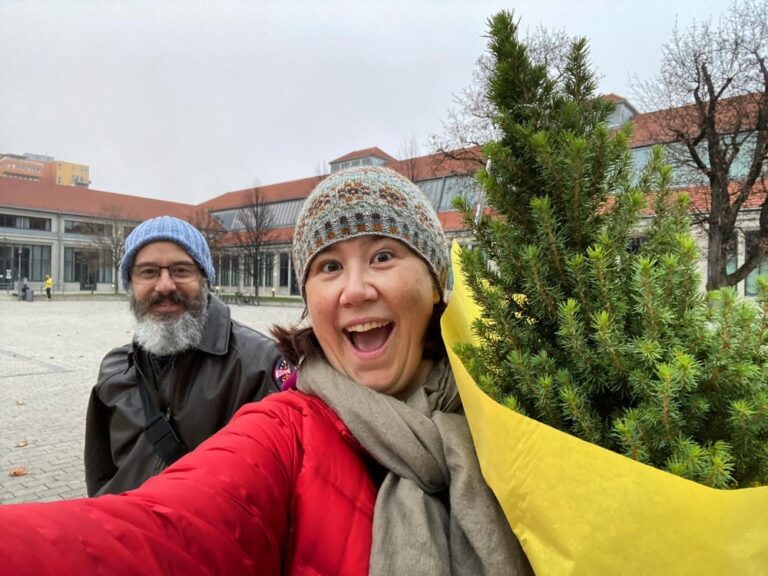
Happy Thanksgiving! Along with my pie, we had Snook-roasted turkey thigh, mash, gravy, and veg. ❤️🦃
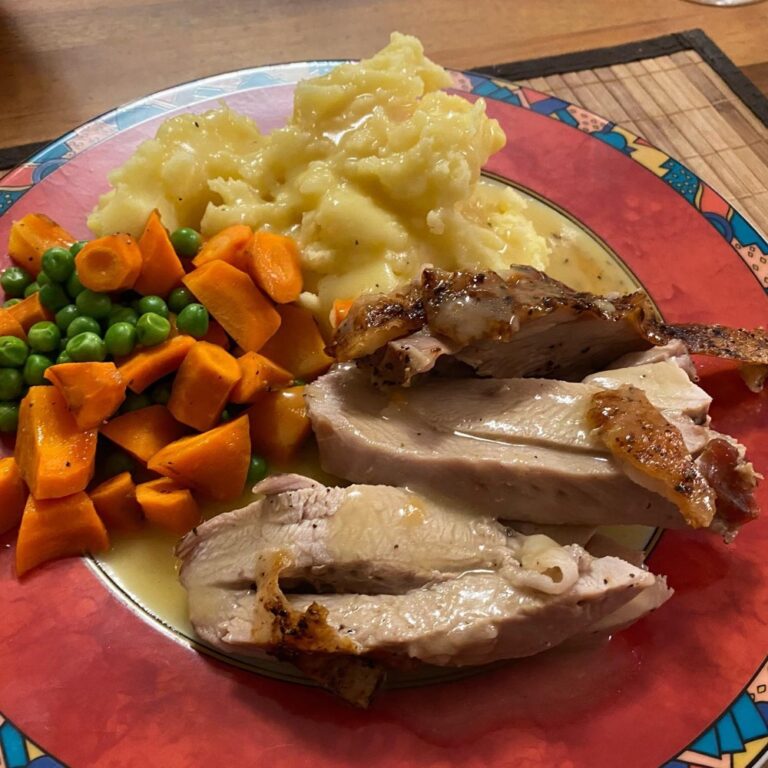
Butternut Pumpkin Pie. I couldn’t find canned pumpkin so I roasted my own. (Used store-bought pastry though.) Really really good!


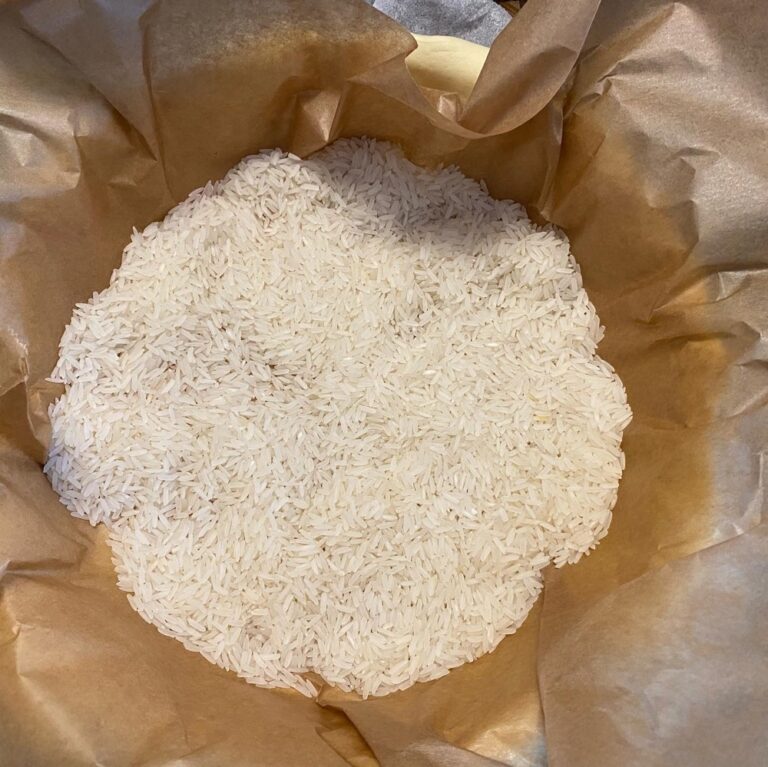
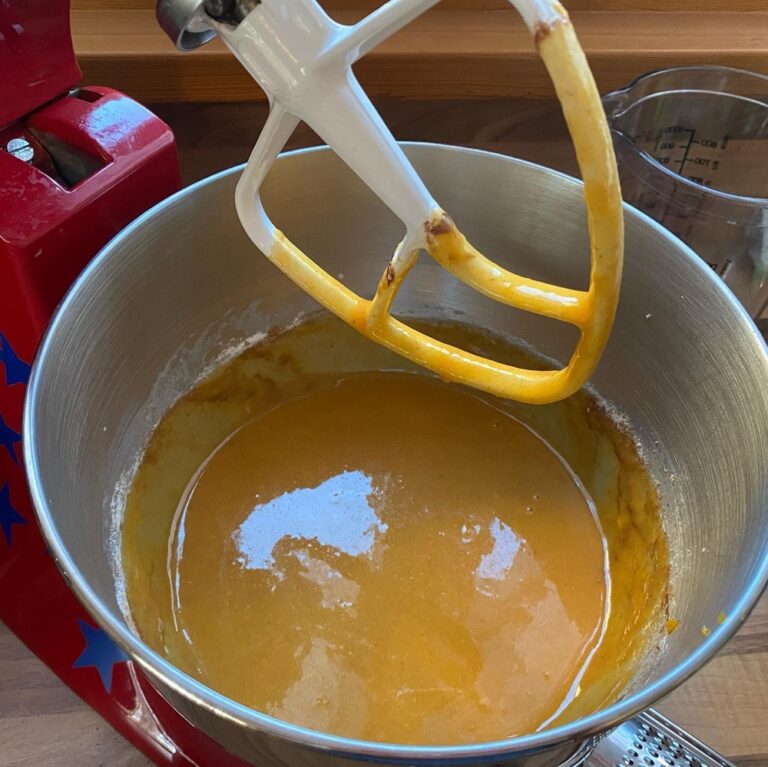


While the Snook cursed @kenjilopezalt’s recipe repeatedly (the timings were evidently *way* off), this Instant Pot French Onion Soup turned out delicious. 🧅🥖🧀🍷

As a thank you for participating in the virtual cooking class at work, I got two jars of honey collected from the hives at the AWS Munich office! ❤️🐝🍯 #beepeculiar #bepeculiar @hereataws
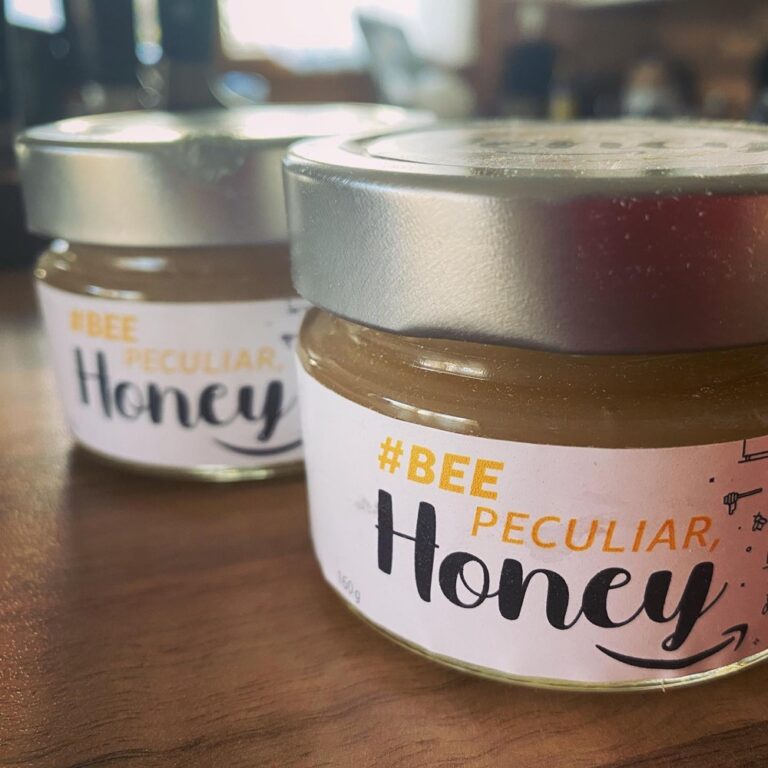
Two weeks ago today, I got a message from OSS Shipping that our shipment from Australia had cleared Customs and was finally going to be delivered! All up it was about ten weeks door-to-door, which is actually incredibly fast for shared container shipping. (Normally you have to wait until an entire container load is filled up with multiple people’s shipments, which can mean a wait time of 15-20 weeks. We got very lucky and our stuff was the last to go into one that was already nearly full.) We had considered air freight, but it’s ridiculously expensive especially as there are less flights right now due to Covid. So instead our stuff went the long way around on the boat to Rotterdam, and then over land to get to us in Munich…
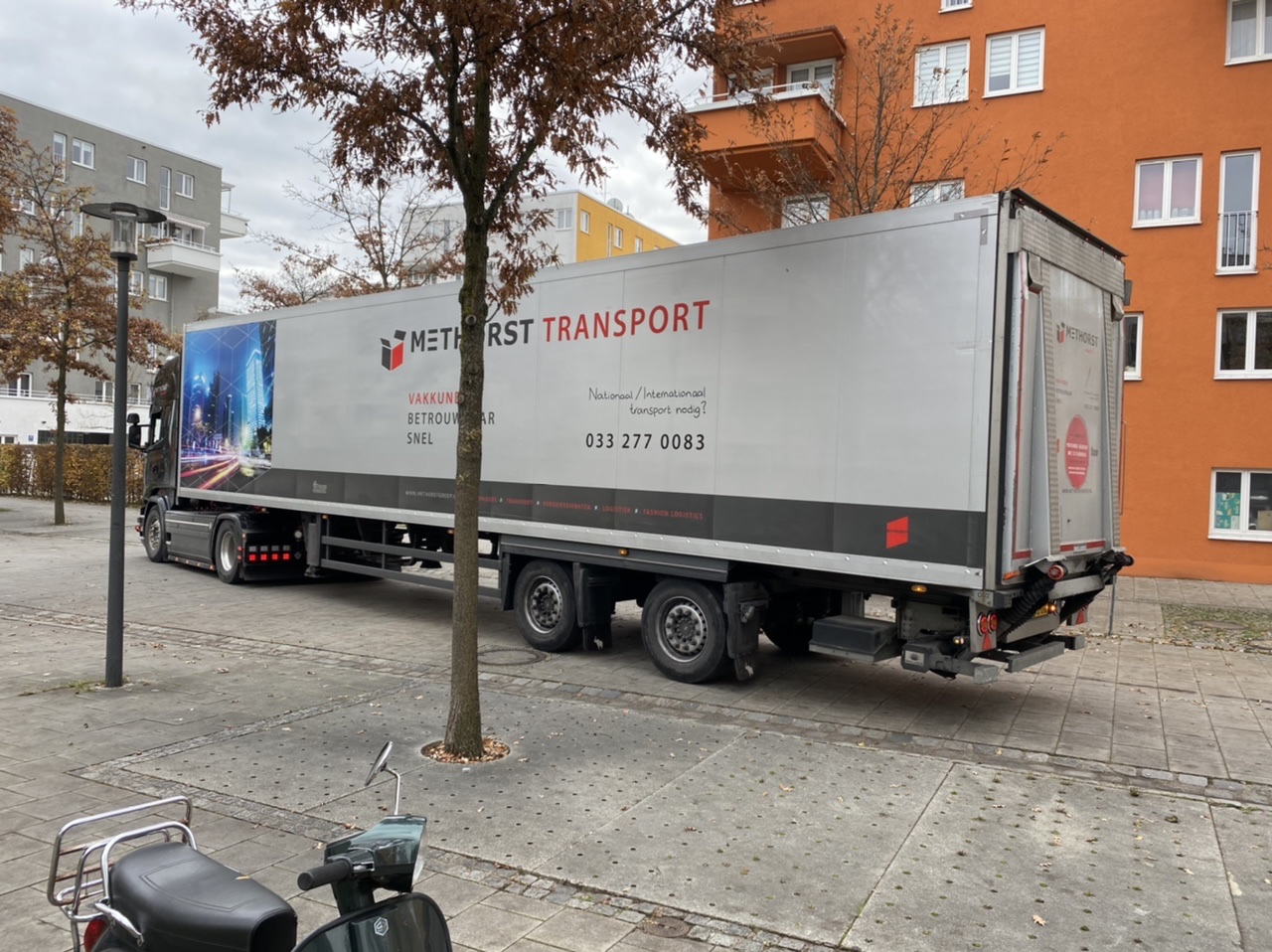
Right on cue, early that Wednesday morning, a truly gigantic semi-truck pulled up in Theriesenhöhe. I spent several nerve wracking minutes directing them through narrow streets with very tight turns so they could pull up as close to our building as possible. A pair of very friendly and funny Dutch guys then proceeded to quickly unload and move all our stuff inside. I read out each box number as it came in and the Snook checked it off the manifest to be sure we didn’t miss anything. Incidentally, the Dutch guys thought it was hilarious that we moved from Sydney to Munich. “Pardon my language,” one of them said laughing, “but why the fuck would you move from Australia to Germany?!” 😂
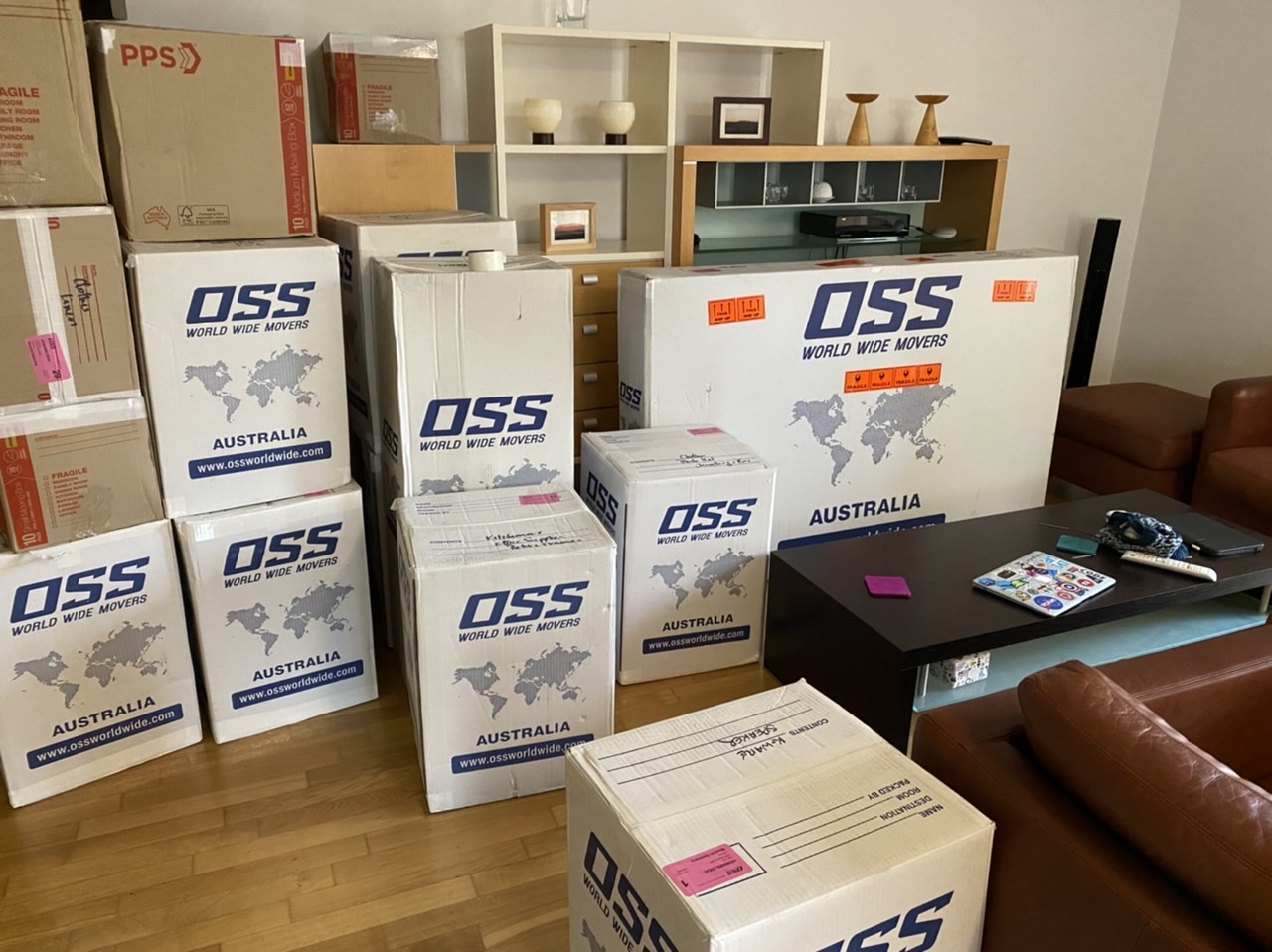
And then they were done, and the Snook and I were left with a lot of boxes to deal with. To be completely honest, we didn’t even fully remember what we’d brought! Once you live out of suitcases for a few months, it’s hard to remember what you deemed essential enough to ship halfway around the world.
It took us a couple days to unpack fully, and even longer to get rid of all the packing materials. Rodd had the brilliant idea of asking at work if anyone wanted moving boxes and bubble wrap, and a couple folks came over (masked and distanced!) that weekend to take the majority of it away. We also had to make several trips to our landlord’s storage unit down in the parking garage, where we carefully packed away a few of his furnishings that we didn’t have room for anymore. And finally… it feels like home!
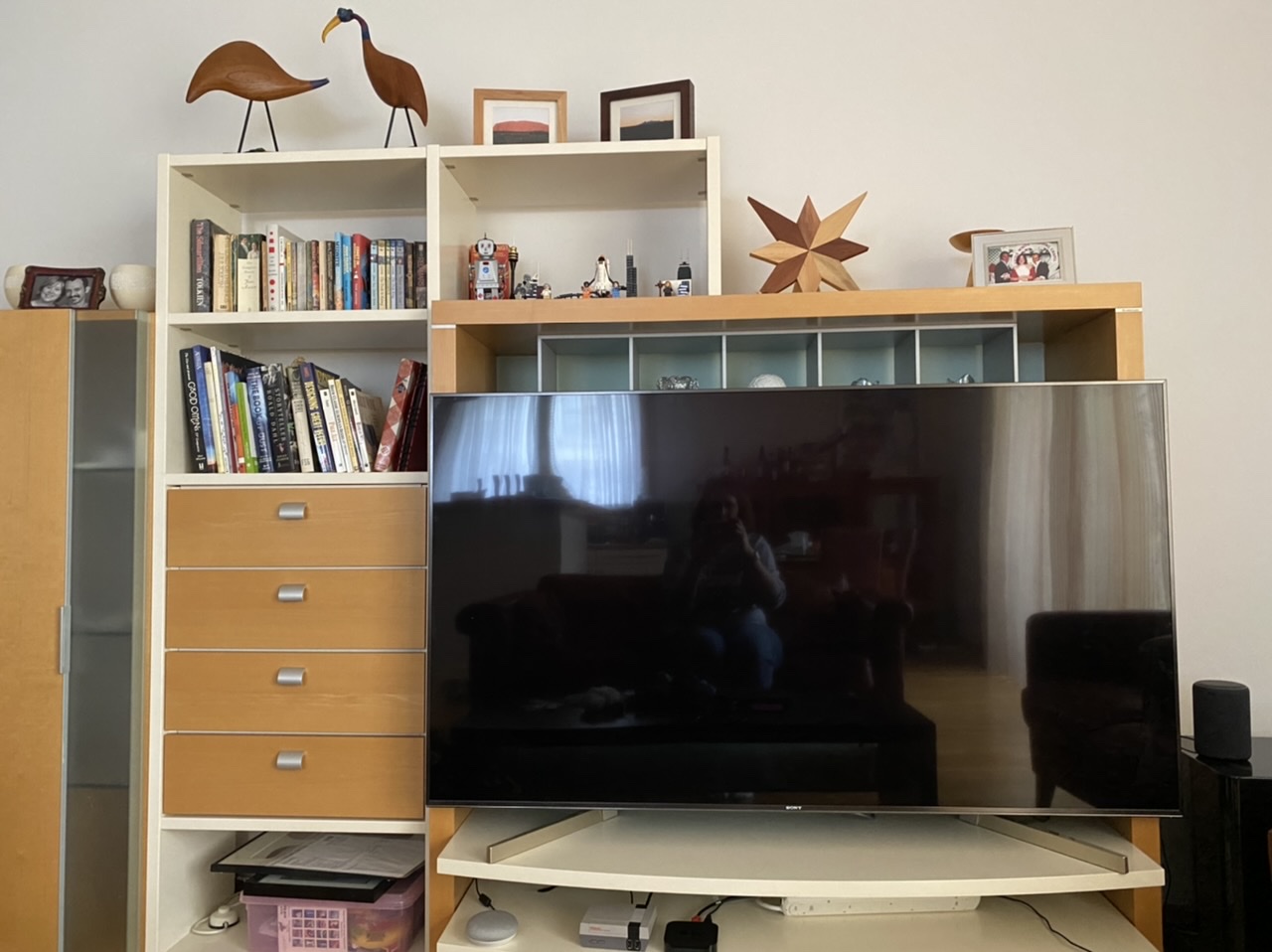
Our TV was the thing that gave us the most worry. It really is giant, and we spent the past two months nervously looking at the entertainment unit and crossing our fingers. Thankfully, it just fits! (If you don’t count the fact that it sticks out past the frame, that is.) 😅 The Google Home, AppleTV, and Nintendo Mini fit nicely underneath.
Around it are a small selection of books (we left most of them back in Australia), photos, some Lego, a wooden star made for us by Rodd’s Mom, as well as a pair of gorgeous wooden birds – Gonzo and Gertie – his parents gifted us many years ago. Unfortunately Gonzo’s head was the one casualty of the trip, but it’s a clean break and we think we’ll be able to easily repair it.
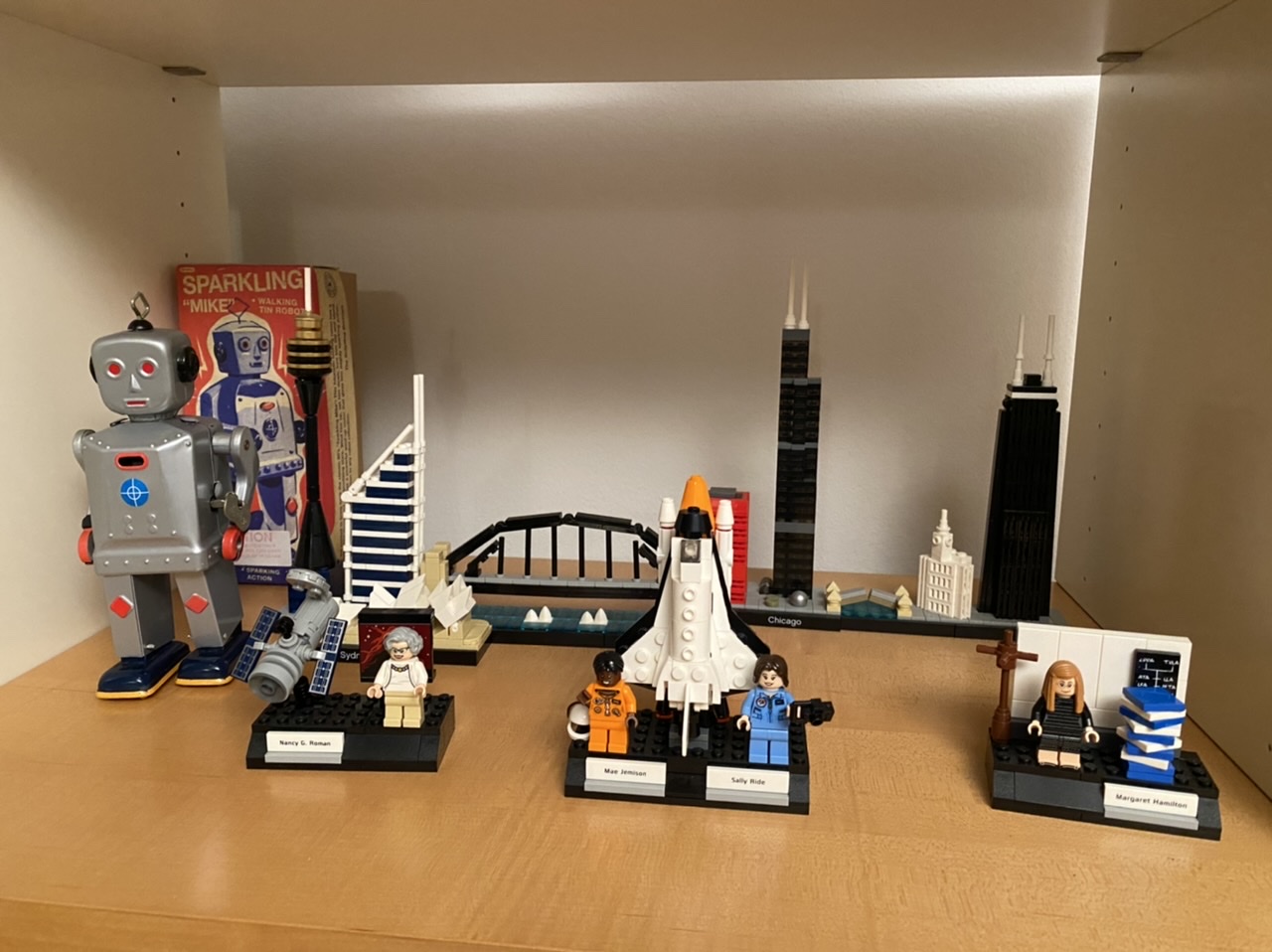
Chicago, Sydney, space and robots… ❤️
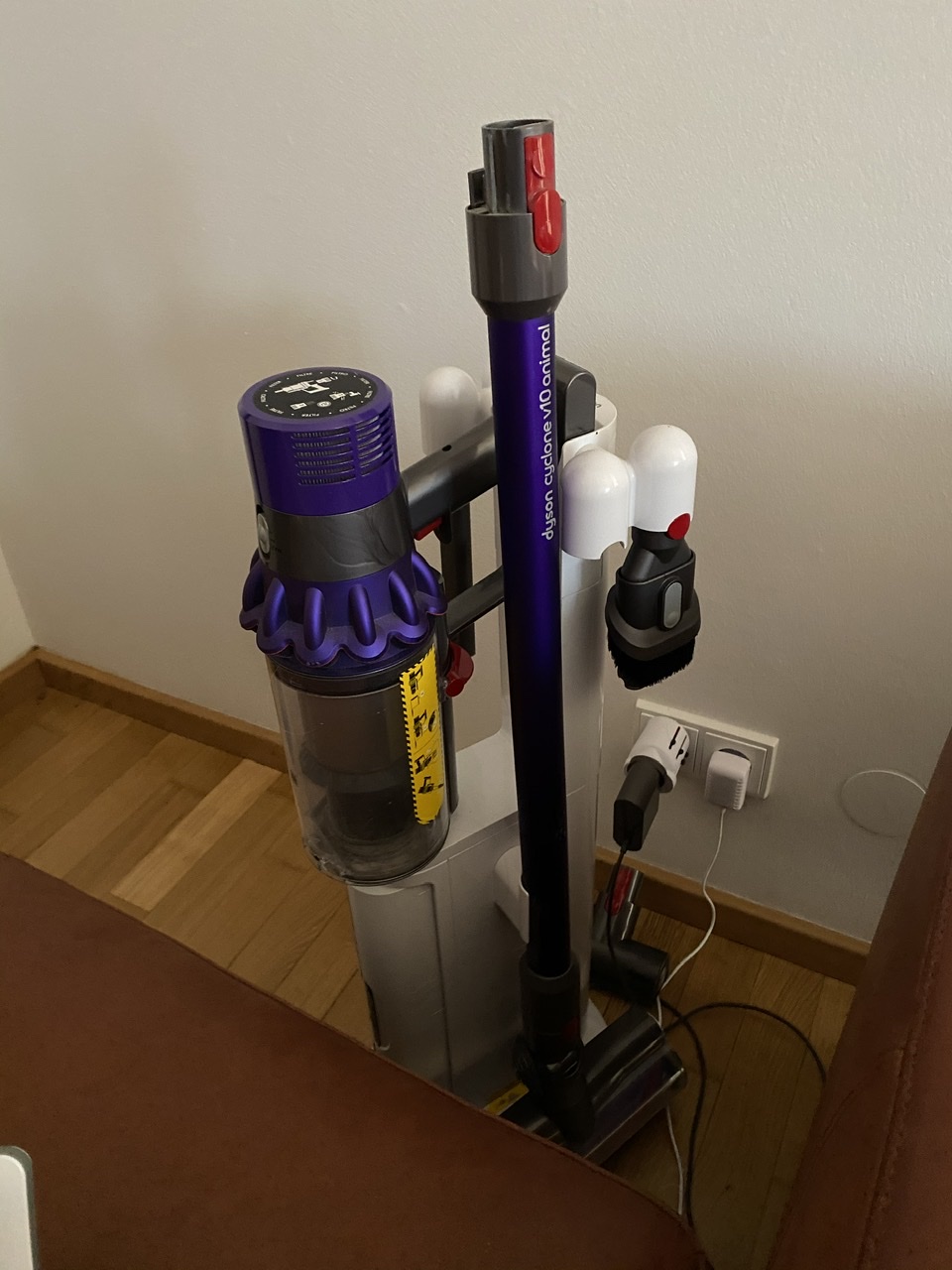
Do you know, we almost didn’t bring the Dyson? It was literally the last thing the movers packed up back in Sydney, just because they said they had a tiny bit of room left. And I’m so happy we did! I really missed it. No other vacuum compares. (I should also mention that the voltage here is the same as in Australia, so all we needed was some converters to be able to use our Aussie electronics and machines.)
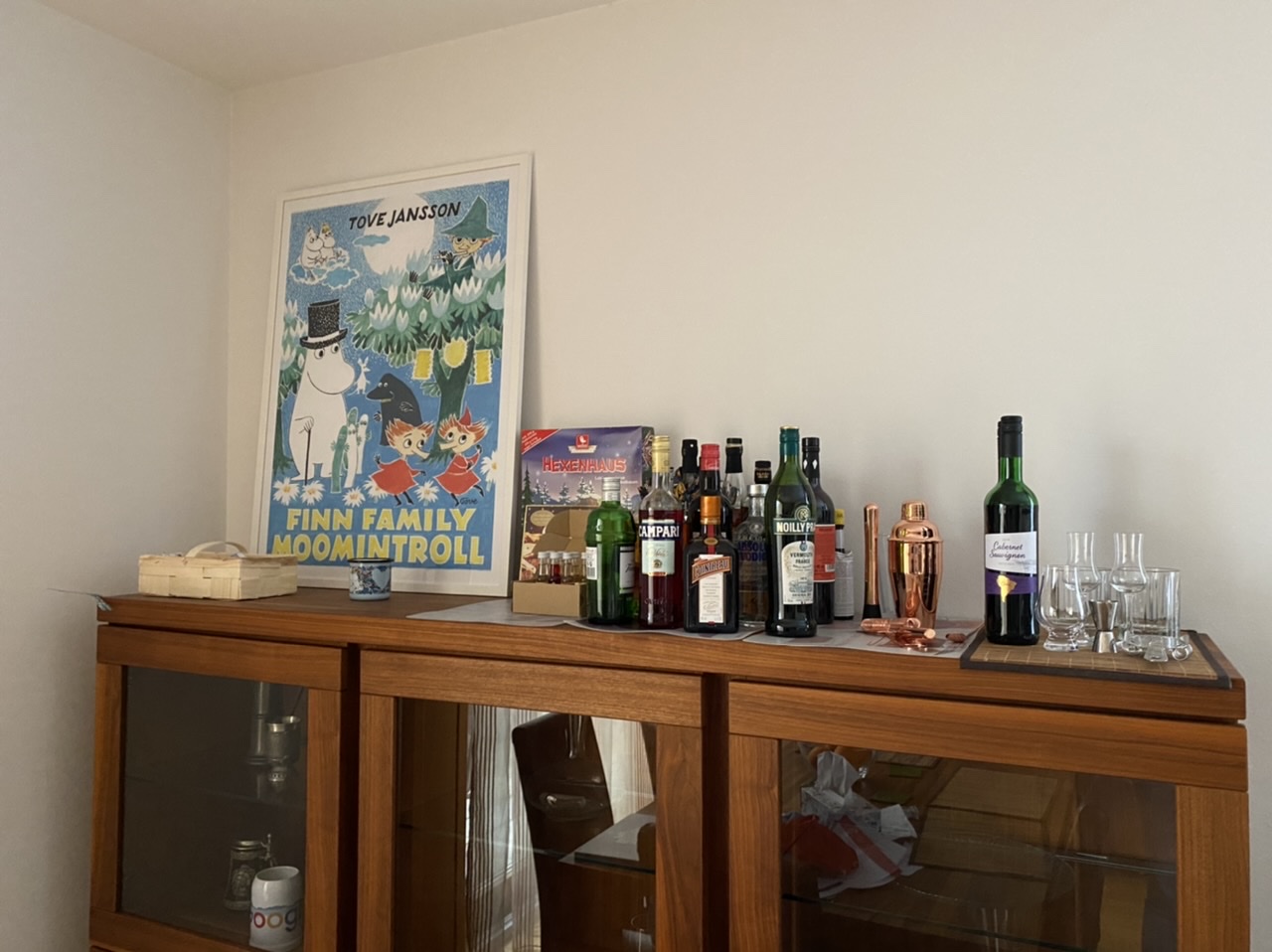
The Moomin poster was too large and heavy to hang, but it stands nicely on top of the dining room cabinet. We’re also using that as the bar (which the Snook gleefully stocked via an online liquor store). See the lovely rose gold cocktail making kit? That was my going-away gift from my team back in Sydney. 🥰
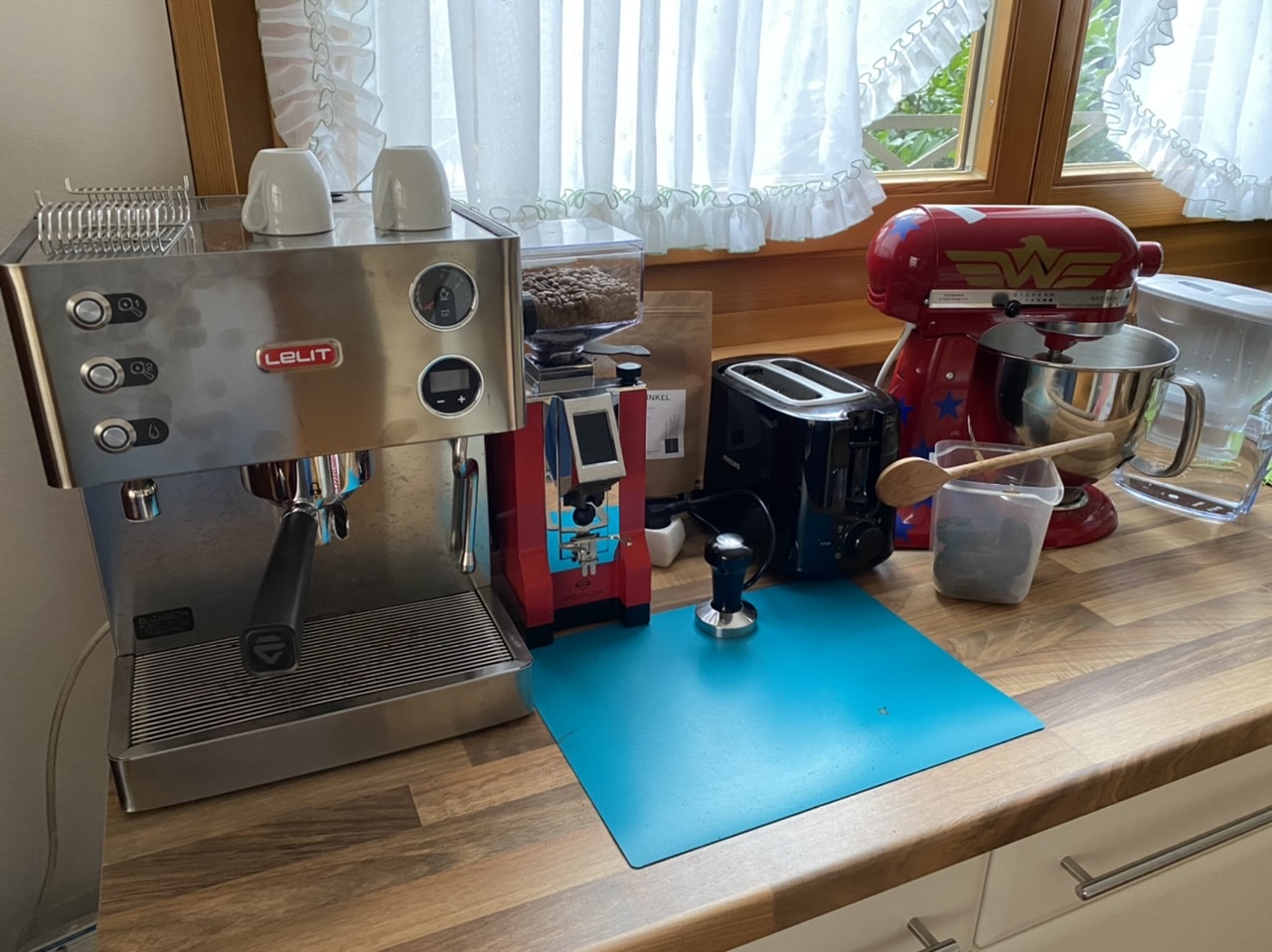
The KitchenAid came, of course, and fits in quite nicely alongside the Snook’s new coffee machine and grinder.
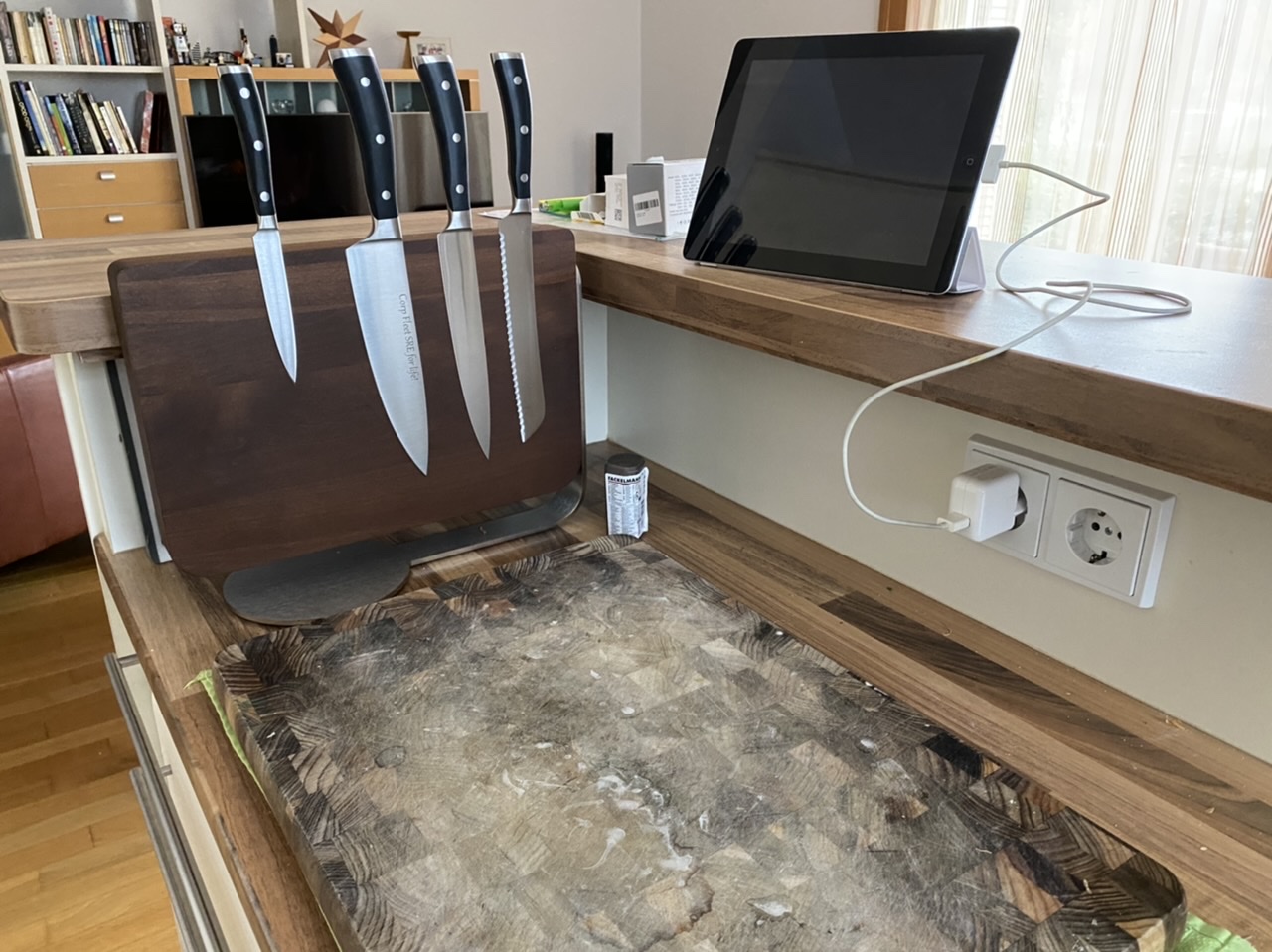
We also brought along a bunch of other kitchen stuff: cast iron skillet and Dutch oven, fancy frying pan, favourite utensils, tea towels that friends gifted us, sous vide machine, Instant Pot, kitchen iPad, and beloved old chopping board. The magnetic knife block and fancy new Wusthof knives were Rodd’s going away gift from his team. (Yep. They went from Germany to Sydney and back again!)
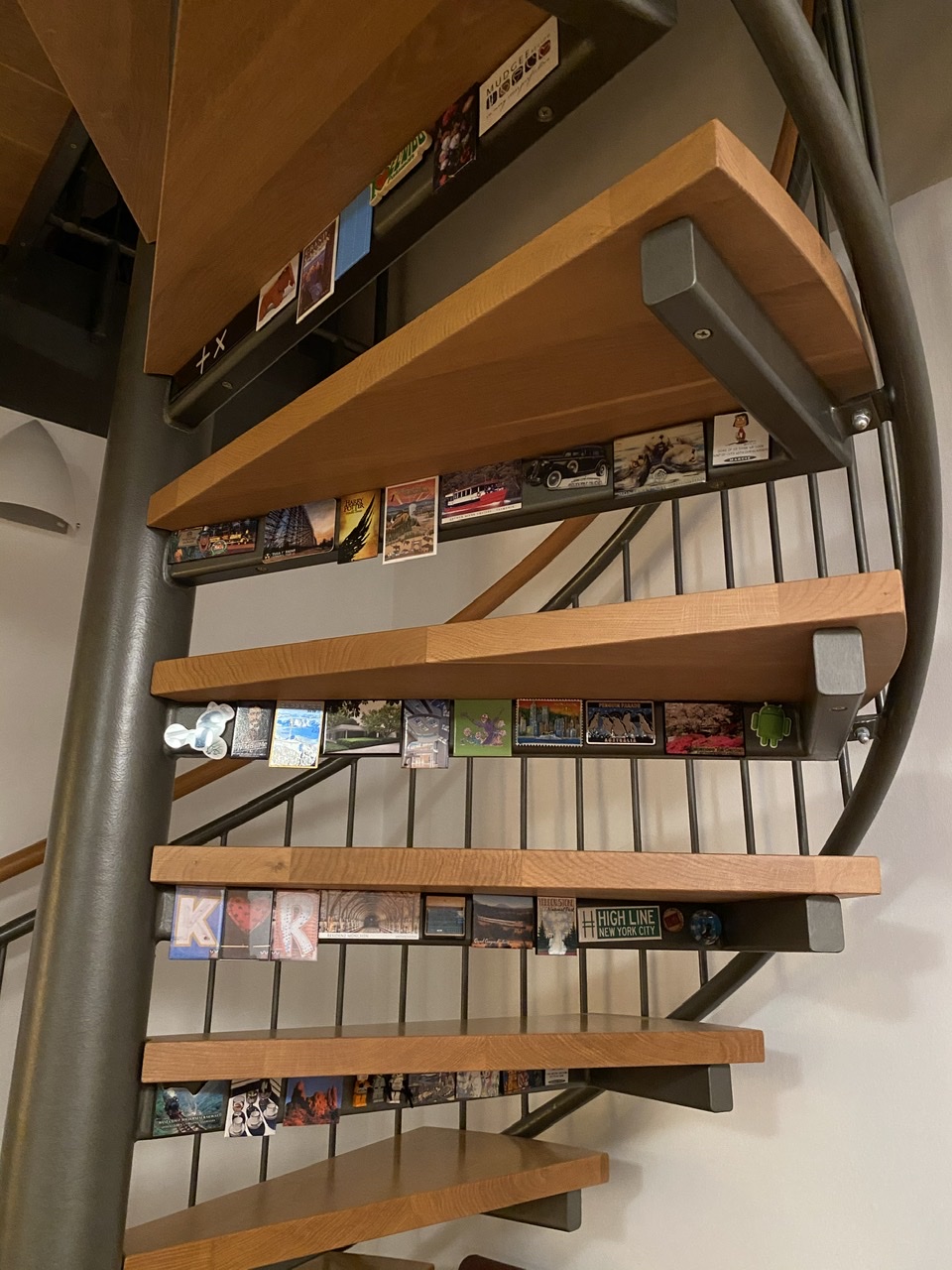
Since our new fridge is built into the cupboard, magnets don’t stick to it. I had a flash of inspiration though and realised I could put our old magnets on the spiral staircase! I love seeing them when I go up and down.
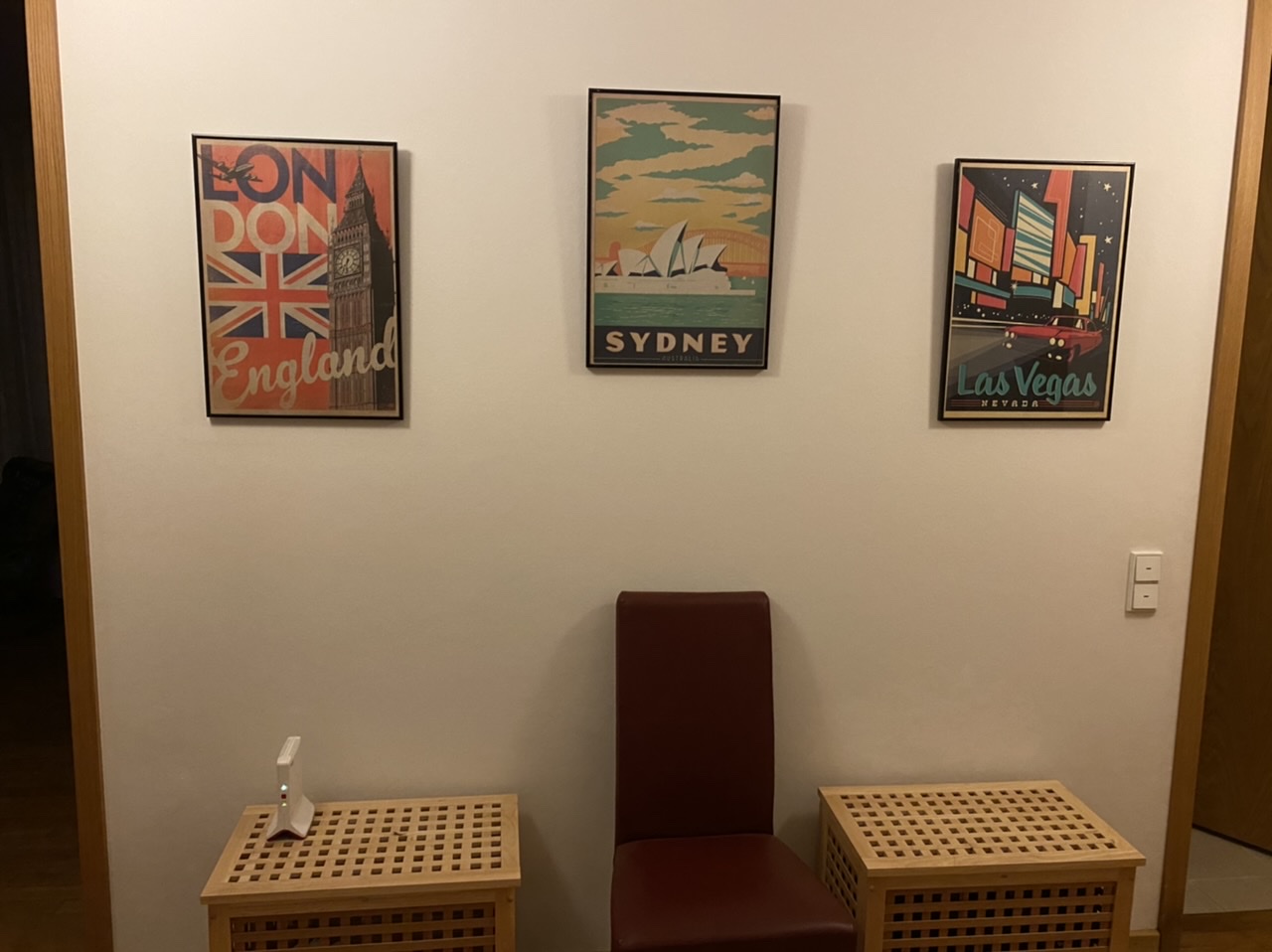
Our landlord kindly allowed us to replace the three artworks in the upstairs hall with these framed travel posters we brought with us. London where we met; Sydney where we lived; and Las Vegas where we got married. We’ve never had them all hanging up together before, and I think they look great.
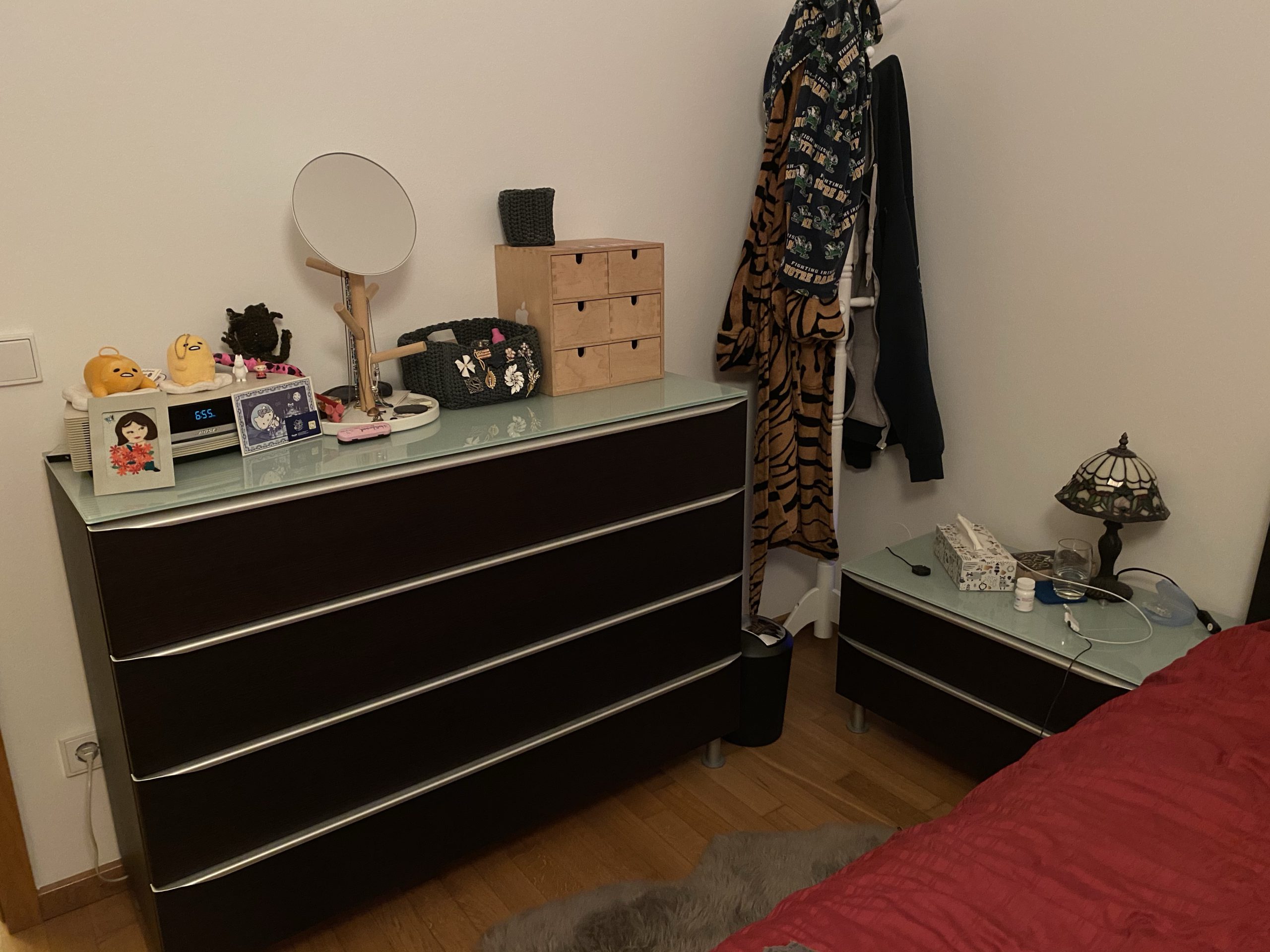
My Gudetama collection came with me, as well as the Baby Groot my friend Jane crocheted for me. And how nice is it to wake up and put your feet on an Aussie sheepskin in the morning?! (Apologies to the vegans…)
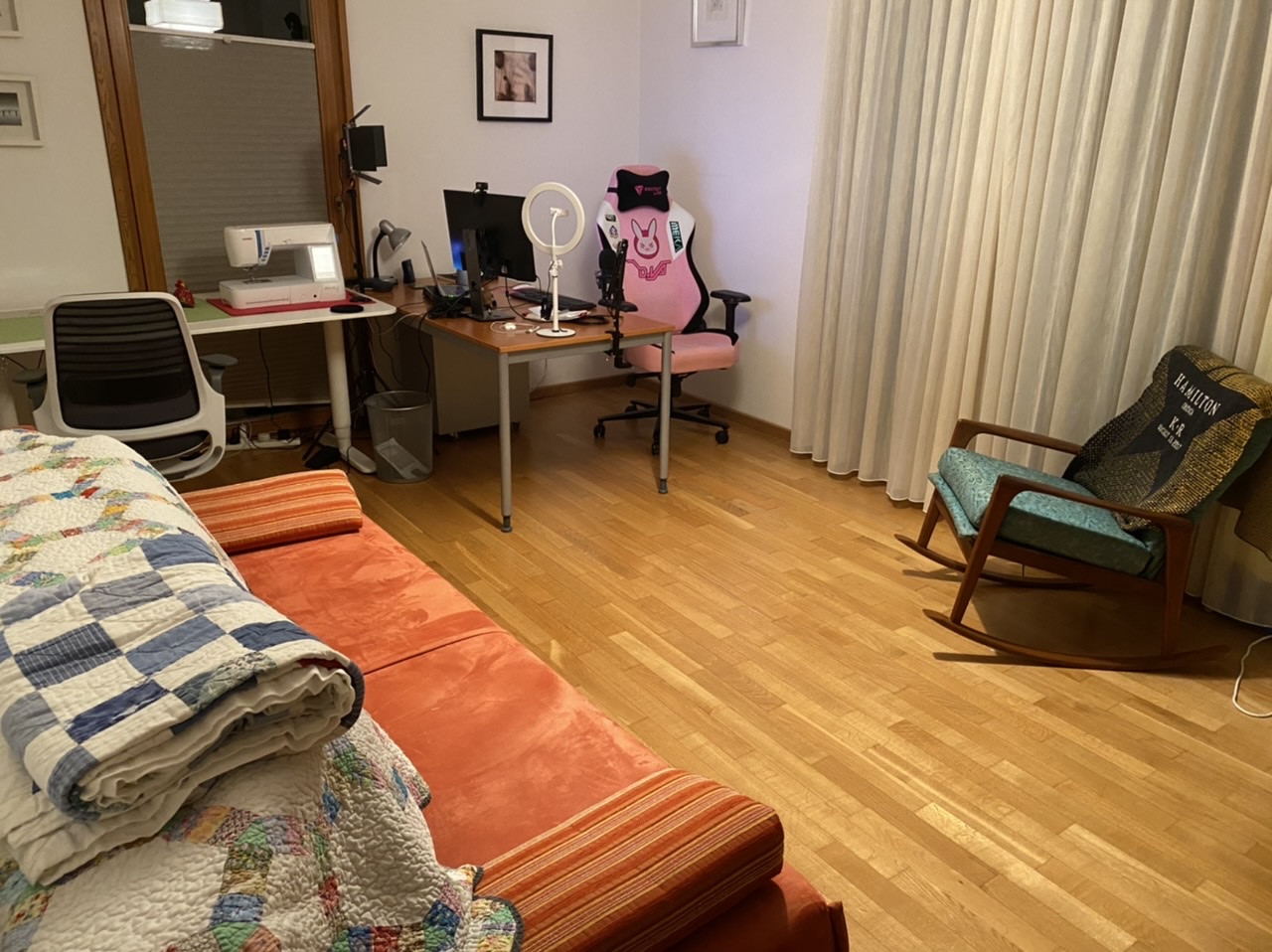
I can’t begin to tell you how much I love my office/craft room. I have my work setup in the corner with my ridiculous gaming chair, fancy microphone, and LED lights for streaming. On the wall are framed artworks from my friends Leonie Connellan and Stuart Spence. On the left my sewing area, with my sewing machine and giant cutting mat. (The desk is an IKEA electric standing desk, so I can raise it up for cutting fabric!) On the right is my vintage Fler rocking chair with the Hamilton blanket custom made by my friend Sarah Spencer. On the pull-out couch are quilts made by my Mom and me.
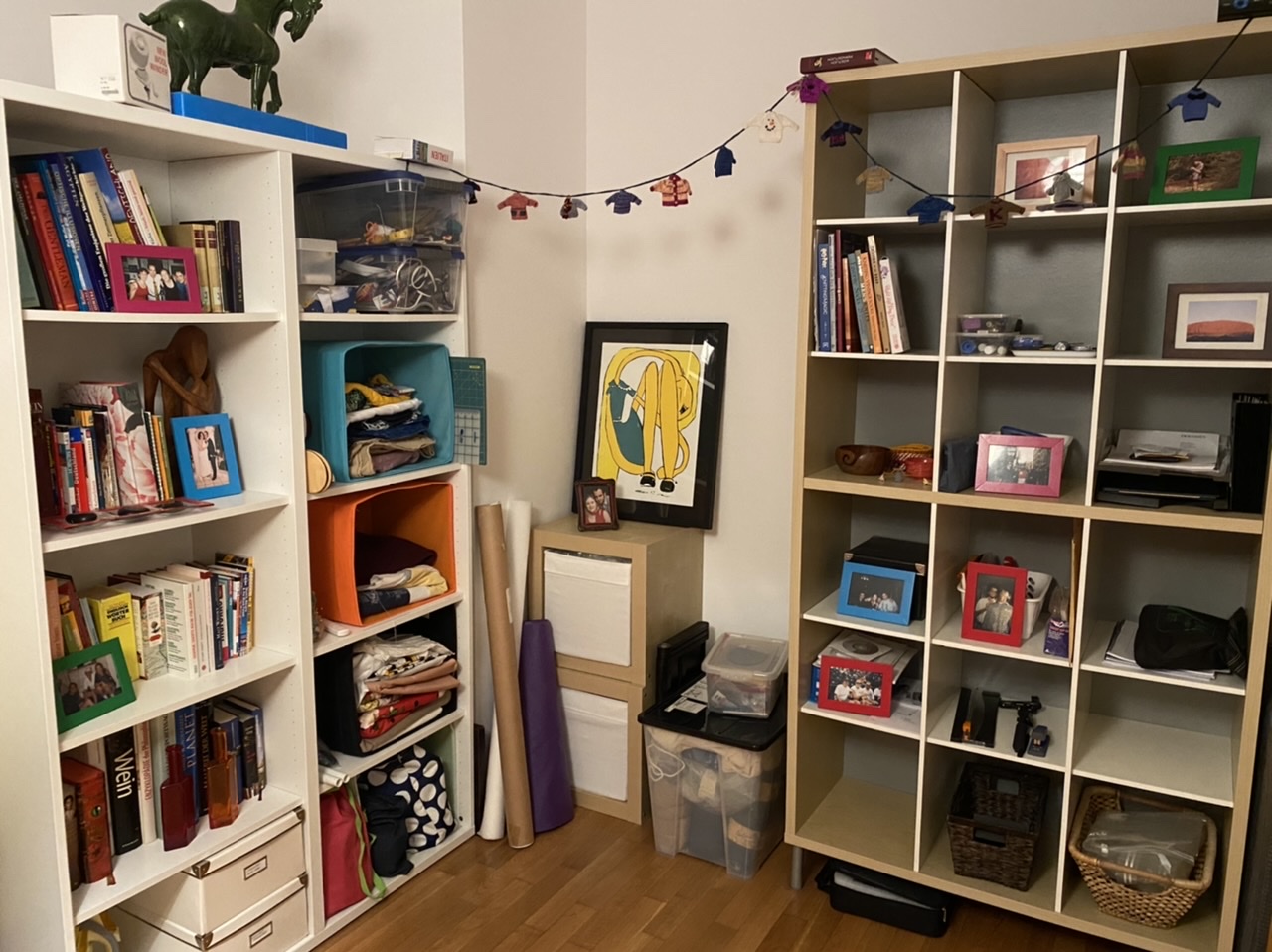
On the bookshelves are my sewing, knitting, and office supplies, as well as a few pattern books I brought along. (The bookcase on the left is full of the landlord’s books; I didn’t bring that many!) The Alice in Wonderland painting is another one by Leonie. The garland of mini sweaters was made by my amazing group of knitting friends back in Sydney, and it makes me smile every time I see it!
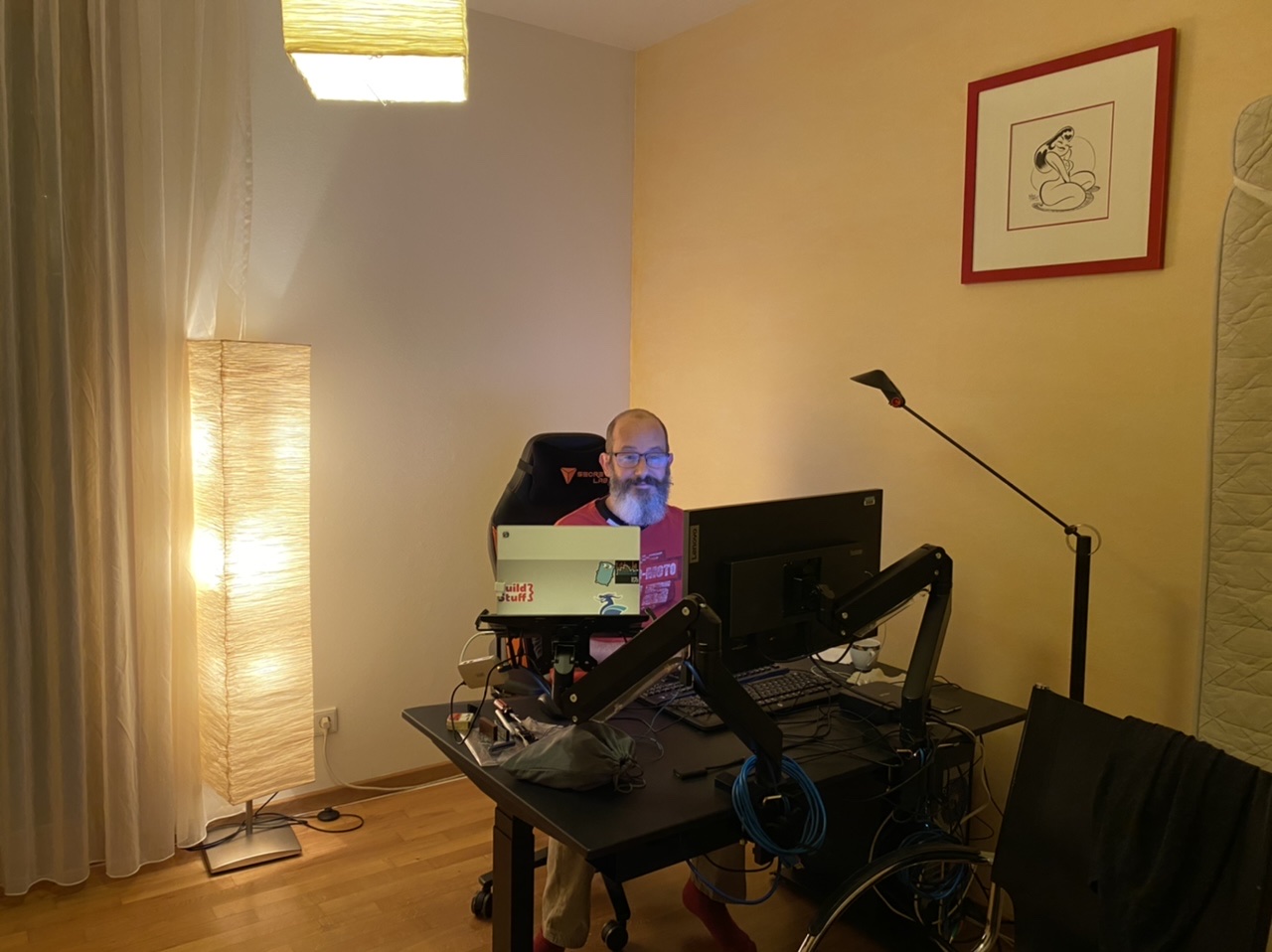
And of course, there’s one more room… the man cave. We disassembled the small bed in here to make room for the Snook’s giant electric standing desk and gaming chair. (Don’t worry; we can put the bed back together if anyone ever visits!) And on the wall is a gorgeous framed girly illustration from our friend Anton Emdin.
Again, I really didn’t anticipate what a big psychological difference it makes having these little touches of home! It finally feels like we’re settled in, right before the long dark winter sets in…
When it comes to TV show merch, I like it very subtle. (Go Land Crabs!) 🦀
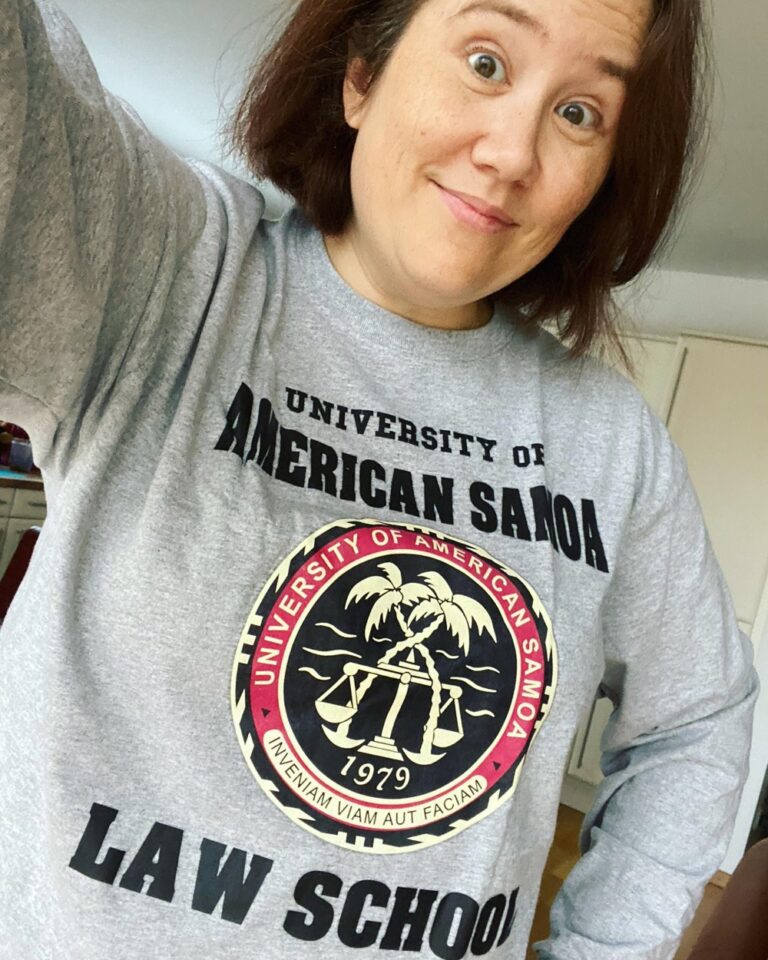
Fit check! I got to the armhole split, and I’m happy to report the sizing looks great. @susancrawfordvintage #lanatus
